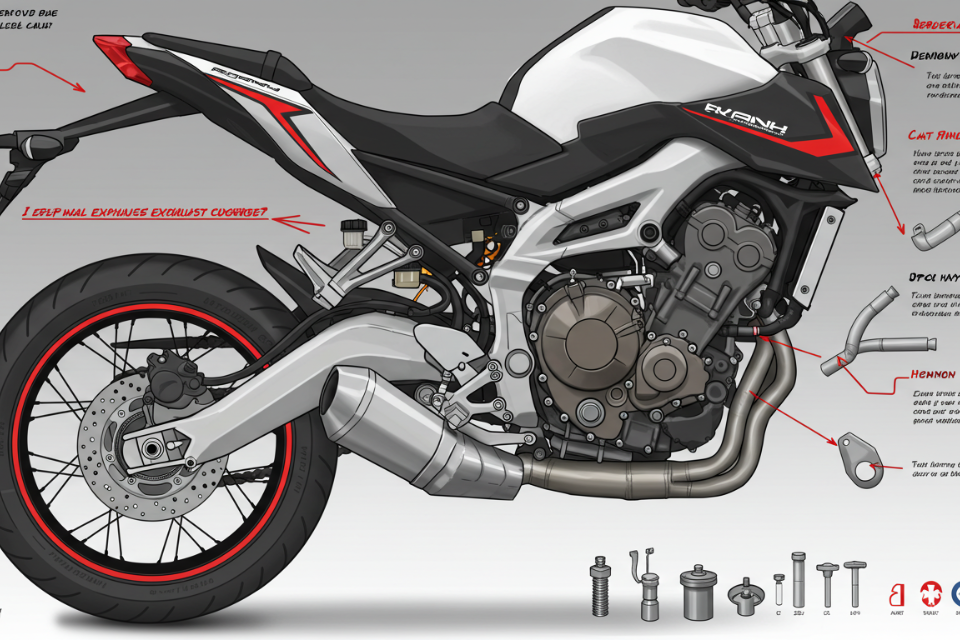Introduction
Upgrading your motorcycle’s exhaust system is a popular modification offering performance enhancements and aesthetic improvements. This guide will walk you through the process of upgrading your exhaust in 2025, covering everything from choosing the right system to installation and legal considerations.
Choosing the Right Exhaust System
The market offers a vast array of exhaust systems. Your choice depends on factors like your budget, riding style, and the specific model of your motorcycle. Consider factors such as material (stainless steel, titanium, carbon fiber), design (slip-on, full system), and sound level. Reading reviews from other riders can be very helpful before committing to a purchase, and you can find tons of reviews on sites like RevZilla or CycleGear.

Understanding Exhaust System Types
There are primarily two types: slip-on and full systems. Slip-on exhausts replace only the muffler, offering a relatively straightforward installation. Full systems replace the entire exhaust system, from the headers to the muffler, often providing more significant performance gains. Choosing between them depends on your needs and budget. For a more detailed comparison, see our guide on Exhaust System Types.
Performance Gains and Considerations
A new exhaust can improve your motorcycle’s horsepower and torque, especially full systems. However, gains vary depending on the system and your bike. It’s important to note that some exhaust systems may decrease low-end torque, so consider your riding style. Also remember to ensure the system is compatible with your bike’s engine management system to avoid issues with fuel injection.
Installation Process
Installing a slip-on system is generally easier and can often be done at home with basic tools. Full system installations are more complex and might require professional help. Always consult your chosen exhaust system’s installation guide. You can also find helpful videos on YouTube showing the process step-by-step, but remember to always prioritize safety.
Sound Level and Legal Compliance
Exhaust noise is regulated in most areas. Check your local laws and regulations regarding exhaust decibel limits before purchasing an exhaust system. Some aftermarket exhausts might not comply, leading to potential fines or issues with law enforcement. Learn more about noise restrictions in your region.
Maintenance and Longevity
Proper maintenance ensures your exhaust system’s longevity. Regular cleaning can prevent the buildup of carbon deposits. Inspect your exhaust for any signs of damage or wear and tear. Also, avoid using harsh chemicals which could corrode the material and affect its durability.
Conclusion
Upgrading your motorcycle’s exhaust system can significantly enhance its performance, sound, and aesthetics. By carefully considering the factors discussed above and following the installation instructions, you can enjoy the benefits of a new exhaust system while ensuring compliance with all relevant laws. Remember to always prioritize safety during installation and maintenance.
Frequently Asked Questions
What are the benefits of upgrading my exhaust? Upgrading your exhaust can lead to increased horsepower and torque, improved sound, and a more aggressive look for your motorcycle.
Is it difficult to install a new exhaust system? The difficulty varies depending on the type of exhaust system. Slip-on exhausts are relatively easy to install, while full systems often require more mechanical expertise.
Are there any legal restrictions on aftermarket exhaust systems? Yes, most jurisdictions have noise level regulations for motorcycles. Ensure your chosen exhaust complies with local laws to avoid potential fines.
How often should I maintain my exhaust system? Regular inspections and occasional cleaning are recommended to maintain the longevity and performance of your exhaust.
What type of exhaust is best for my riding style? The best exhaust system for you depends on your priorities. If you prioritize performance, a full system is likely ideal. If you want a simple upgrade, a slip-on might be sufficient. Consult a professional for more personalized advice.



